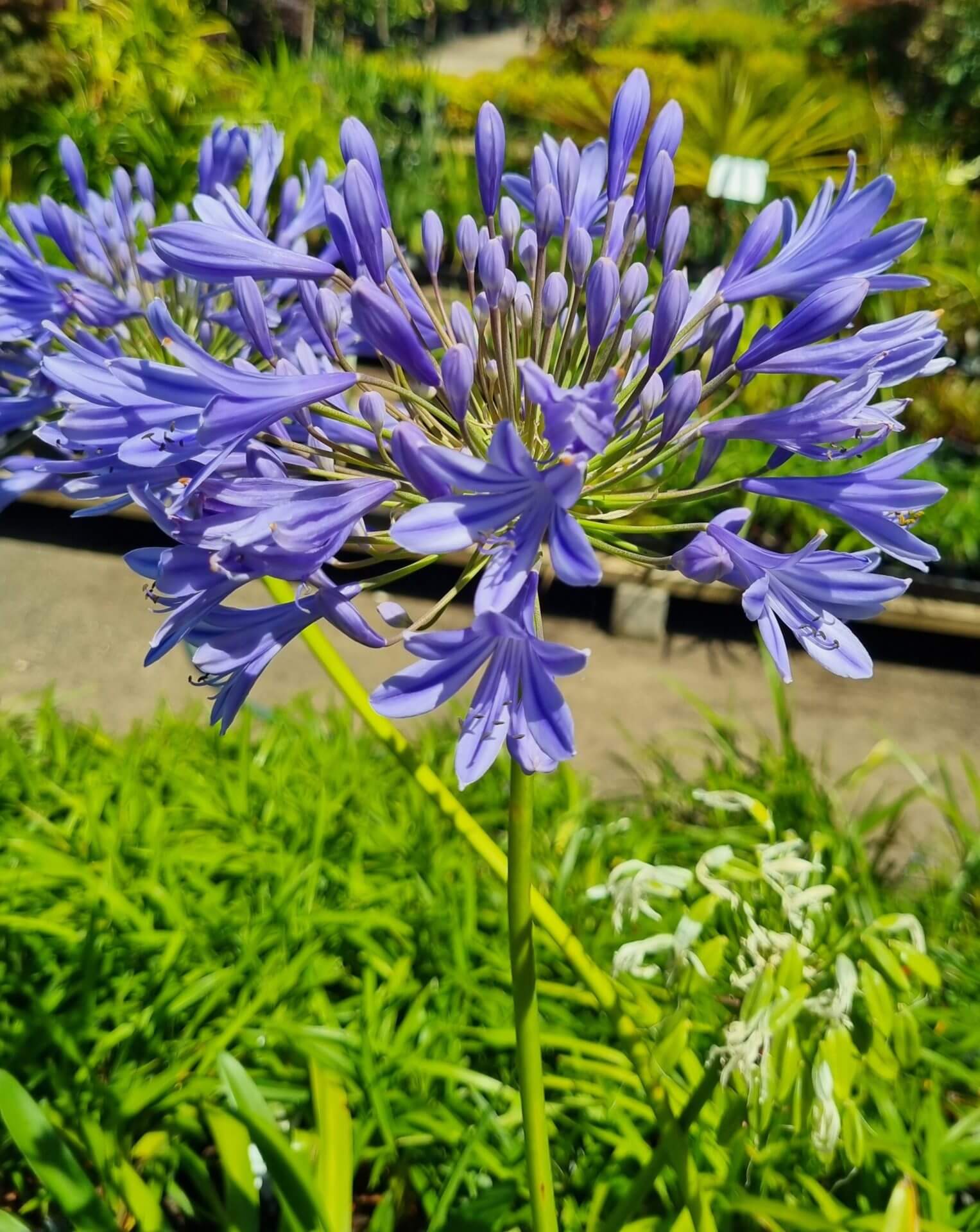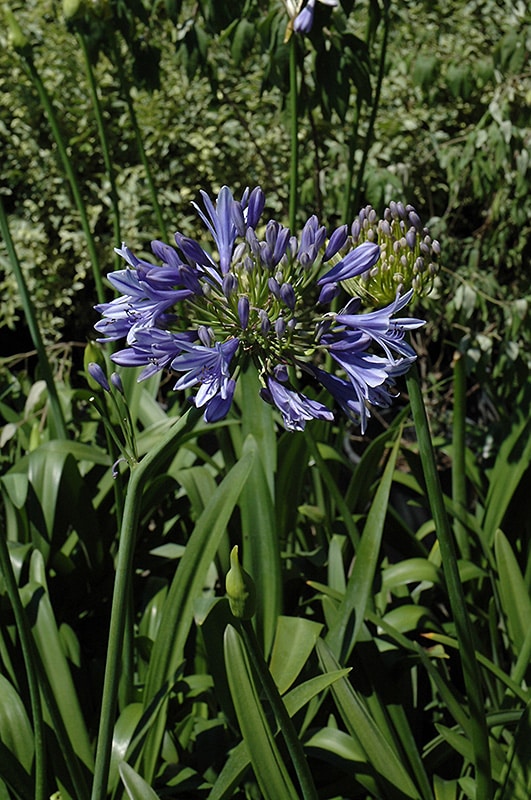Common Agapanthus Troubles and How to Address Them
Common Agapanthus Troubles and How to Address Them
Blog Article
Releasing the Secret to Effective Agapanthus Farming: Idea for a Flourishing Garden
In the world of gardening, cultivating agapanthus successfully needs a strategic strategy that encompasses different facets of plant care. By recognizing the subtleties of agapanthus cultivation, one can create a setting where these plants prosper and flower generously.
Growing Agapanthus: Best Practices
When planting Agapanthus, appropriate soil preparation is essential for guaranteeing effective growth and growth of these gorgeous blossoms. Agapanthus, typically known as Lily of the Nile or African lily, grows in well-draining soil with a slightly acidic to neutral pH degree - Agapanthus. Prior to growing, it is vital to modify hefty clay soils with raw material such as compost or peat moss to enhance water drainage and give important nutrients for the plants
To plant Agapanthus, select a location that receives full sunshine to partial color, as this will promote healthy development and plentiful blooming. Dig an opening two times the size of the plant's origin ball and position the Agapanthus at the very same depth it was formerly expanding. Carefully backfill the hole with soil, pushing down firmly to get rid of any kind of air pockets around the roots.
Water the recently grown Agapanthus extensively and proceed to maintain the dirt evenly damp, particularly throughout the plant's active growing season. Agapanthus. Applying a balanced fertilizer once a month can further support the plant's growth and blooming. By adhering to these ideal practices for planting Agapanthus, you can develop a sensational screen of these captivating blossoms in your yard
Perfect Soil Issues for Agapanthus
For optimal growth and flowering success of Agapanthus plants, ensuring the soil problems are suitable is essential. Agapanthus favors soil that is rich in nutrients, so incorporating a balanced plant food during the growing period can advertise healthy and balanced development and lively blooms.

Watering and Feeding Tips
To make certain healthy and balanced growth and vibrant blossoms, correct watering and feeding strategies are necessary for successful Agapanthus cultivation. Agapanthus plants profit from regular watering, specifically throughout the expanding period. It is advised to water deeply when a week, making certain the soil is wet however not waterlogged. During hot weather or in pots, more constant watering may be essential to stop the dirt from drying out completely.
When it involves feeding Agapanthus, a well balanced plant food with equivalent parts nitrogen, phosphorus, and potassium can be applied in the springtime to promote healthy and balanced development and flowering. Slow-release fertilizers are ideal for supplying nutrients my blog slowly over an extended period. Stay clear of over-fertilizing, as this can lead to too much foliage development at the expenditure of blooms.
In addition, integrating natural issue like garden compost into the soil can improve nutrient levels and boost dirt framework, assisting in the overall wellness of the Agapanthus plants. By complying with these watering and feeding pointers, gardeners can guarantee their Agapanthus plants thrive and generate sensational displays of flowers.
Trimming and Deadheading Strategies
Proper trimming and deadheading methods play an essential role in preserving the health and visual appeals of Agapanthus plants, enhancing the important methods of watering and feeding for successful farming. Pruning Agapanthus involves removing spent flower heads, yellowing or dead leaves, and total shaping of the plant to promote better development. Deadheading, the procedure of eliminating faded flowers, not only boosts the plant's appearance yet additionally motivates further flowering.
When deadheading Agapanthus, it is recommended to clip off the blossom stem at the base utilizing sharp, clean shears. This procedure reroutes the plant's power from seed production back right into origin and foliage development, promoting a much healthier and much more durable plant. Regular deadheading can prolong the blooming duration of Agapanthus and protect this link against self-seeding, which can lead to congestion.
In regards to trimming, Agapanthus usually advantages from a light trim after flowering to tidy up the plant and urge fresh development. Cutting down the spent blossom stems and eliminating any kind of broken or dead vegetation assists keep the plant's vigor and general look. Nevertheless, it is important to stay clear of cutting right into the crown of the plant, as this can damage its health.

Protecting Agapanthus From Vermins and Diseases
Applying reliable parasite and condition monitoring techniques is essential to protecting the health and vigor of Agapanthus plants in growing. Agapanthus are typically hardy plants, yet they can still succumb to various bugs and diseases otherwise effectively cared for. One typical parasite that impacts Agapanthus is the Agapanthus borer, a caterpillar that tunnels right into the plant, causing damage to the fallen leaves and blossoms. To protect against invasions, normal inspection of the plants is necessary. If borers are detected, they can be by hand gotten rid of, or insecticidal soap can be made use of as a control step.
In addition to parasites, Agapanthus are susceptible to diseases such as root rot and fungal leaf places. By staying watchful and addressing parasite and condition problems without delay, gardeners can assist their Agapanthus grow and flourish.

Conclusion
In verdict, successful farming of agapanthus calls for correct growing methods, perfect dirt problems, adequate watering and feeding, regular trimming and deadheading, and defense from diseases and insects. By following these methods and pointers, garden enthusiasts can make certain a prospering garden full of attractive agapanthus blossoms. Agapanthus. Bear in mind to preserve consistent care and interest to detail to promote the wellness and longevity of these spectacular plants
When growing Agapanthus, proper dirt prep work is necessary for guaranteeing successful development and growth of these attractive flowers.Water the freshly grown Agapanthus extensively and continue to maintain the dirt equally damp, particularly throughout the plant's active growing period.For optimum growth and blooming success of Agapanthus plants, guaranteeing the soil conditions are ideal is critical. When transplanting or growing Agapanthus, guarantee the dirt is well-prepared to give sites the necessary foundation for the plants to develop themselves effectively. One usual insect that influences Agapanthus is the Agapanthus borer, a caterpillar that tunnels right into the plant, triggering damage to the blossoms and leaves.
Report this page